Preparing a sport session with TPSR
Description of the Learning Unit
Description:
This course is based on the Teaching Personal and Social Responsibility (TPSR) model. This lessons provides practical ideas on how to plan a TPSR-based sport lesson.
Learning Outcomes:
- Learn to plan a TPSR-based physical activity lesson.
Keywords:
- empowerment-based leadership
- self-development
- transfer of life skills
How to follow this learning unit?
- Read the learning materials of this topic by clicking open the title banners.
- At the end of the sections, assess your understanding with a quiz or an exercise.
Background reading materials:
- Hellison, D. (2011). Teaching personal and social responsibility through physical activity (3rd ed.). Champaign, IL: Human Kinetics.
- Martinek, T. & Hellison, D. (2016). Teaching personal and social responsibility: Past, present, and future. Journal of Physical Education, Recreation & Dance, 87(5), 9-13. doi: 10.1080/07303084.2016.1157382
- Hanna-Mari Toivonen, Paul M. Wright, Mary Hassandra, Martin S. Hagger, Nelli Hankonen, Mirja Hirvensalo, Markus Talvio, Daniel Gould, Sami Kalaja, Tuija Tammelin, Kaarlo Laine & Taru Lintunen (2019): Training programme for novice physical activity instructors using Teaching Personal and Social Responsibility (TPSR) model: A programme development and protocol, International Journal of Sport and Exercise Psychology, DOI: 10.1080/1612197X.2019.1661268
STEP 1. Evaluate students’/group’s current levels of responsibility
Start the planning by evaluating which of the responsibility levels the children/group are currently at. This evaluation helps you to identify, how much responsibility you should expect and you can demand from the children/group.
Level 0 = Irresponsibility
Level 1 = Respect for the rights and feelings of others
Level 2 = Effort and cooperation
Level 3 = Self-direction
Level 4 = Caring and leadership
Level 5 = Transfer of responsibility outside the physical activity setting
Review the descriptions of responsibility levels in the Introduction to the TPSR model page (at the section Values and Levels).
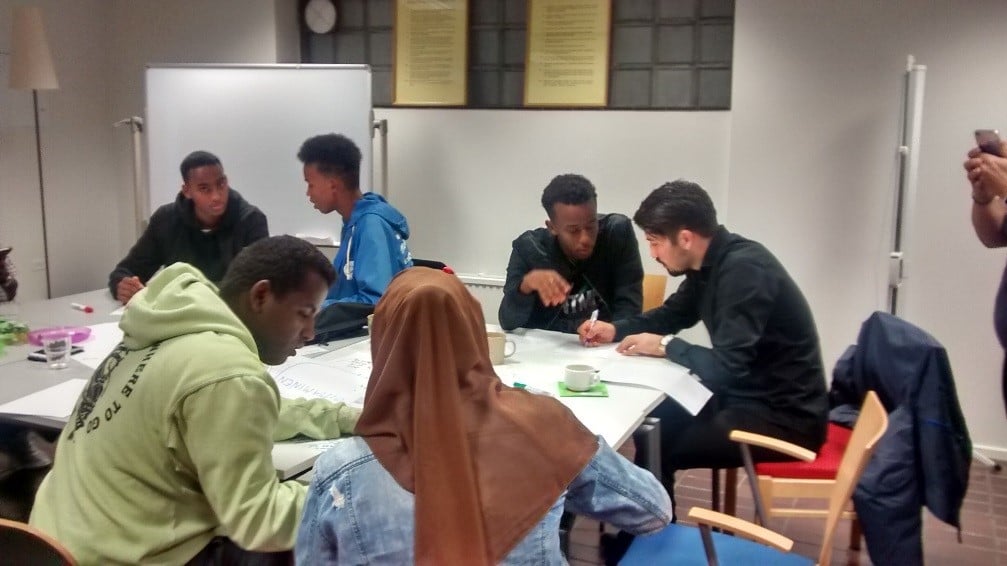
Make a list of the skills you could/should teach based on the current responsibility level?
If the children in the group are at very different levels, as often happens, you need to consider this when planning a lesson. For example:
- What is the range of responsibility in the group (i.e. what is the lowest level, a child in the group is at and what is the highest)?
- How will you ensure that the children who are more responsible/less responsible have a chance to develop their responsibility during the lesson?
- Is it possible to divide the group during the lesson? How?
- Could the more responsible children help the less responsible ones during the lesson? How?
STEP 2. Choose appropriate life skills to teach during the lesson
1. Choose a life skill
- Identify the challenges in the group (with a new group start with respect)Consider the group’s age, gender distribution, cultural background, physical activity skill level, available resources, environment, etc.
- Choose a challenge (one that requires the least responsibility) [Link to responsibility levels]
- Make a list of life skills needed to handle the challenge
- Choose a life skill from your list (one that requires least responsibility) [Link to responsibility levels]
- Divide the life skill into smaller more teachable pieces
2. Brainstorm or create a mind map of the chosen life skill
- Brainstorm
- Create a list of anything that comes into your mind related to the chosen life skill.
- Do not evaluate at this point if the things/ideas are good or bad but write everything down.
- Create a mind map (see an example below)
- Write down the chosen life skill in the map.
- Draw connections, write down words or draw things that you think the life skill is linked to.
- Highlight teachable pieces on your mind map.
- Look at your mind map and choose which of the teachable pieces of the life skill you will start with and why.
Example mind map (see powerpoint)
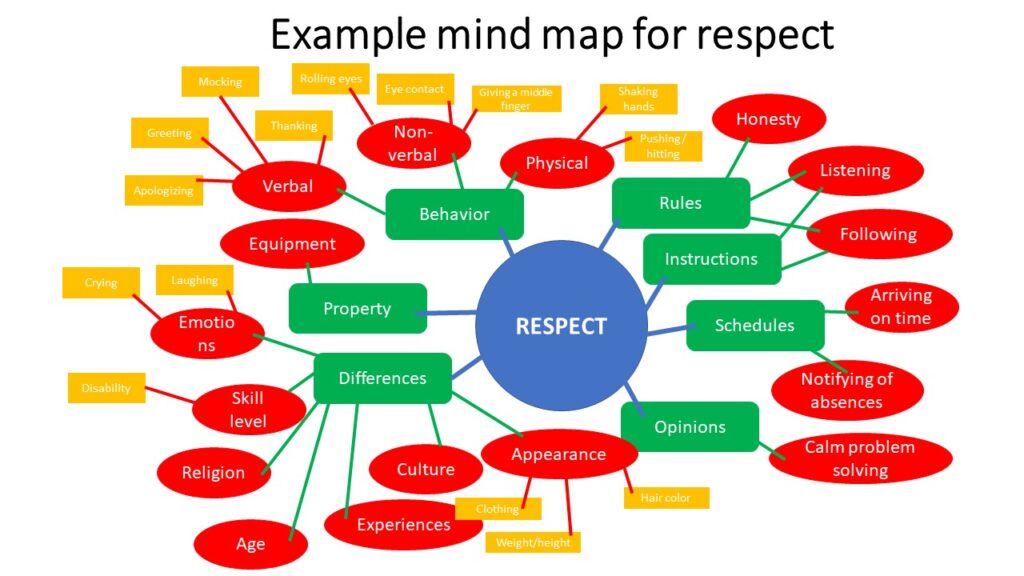
STEP 3: Plan the lesson
1. Create a written lesson plan
- Once you have chosen the teachable pieces of the life skill(s), create a written lesson plan.
- Remember that well planned is half done!
- Reserve enough time for planning the lesson! At first, planning can be very time consuming. However, clear and detailed plan will improve the quality of the lesson.
Take a look at the example lesson plan and the lesson plan template with instructions.
You can use the lesson plan template (see the image below) to create your own lesson plan. Upload the template (Word document) here. (All templates are also gathered into the Tips, Tools and Templates -unit on the front page).
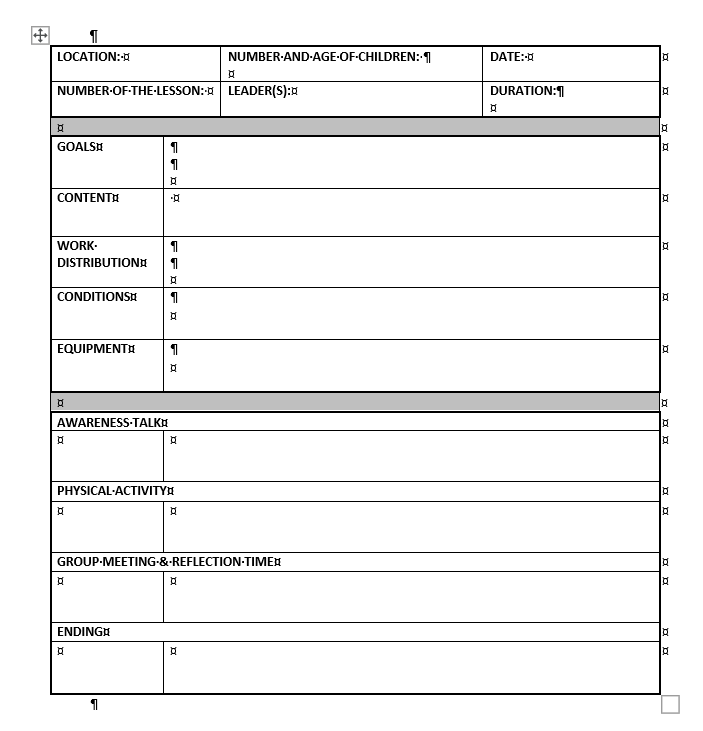
To review the lesson format, see the lesson format on the Introduction to the TPSR model page (at the section Lesson Format).
2. Set clear goals
- Set goals concerning the physical activity and the chosen life skill(s).
- Be specific and realistic: What do you want to and believe is possible to achieve during one lesson?
- Do not set too many goals: What are the most important 2-3 pieces?
- Make sure the goals are measurable: How will you know after the lesson if the goals were achieved/not achieved?
3. Plan the awareness talk
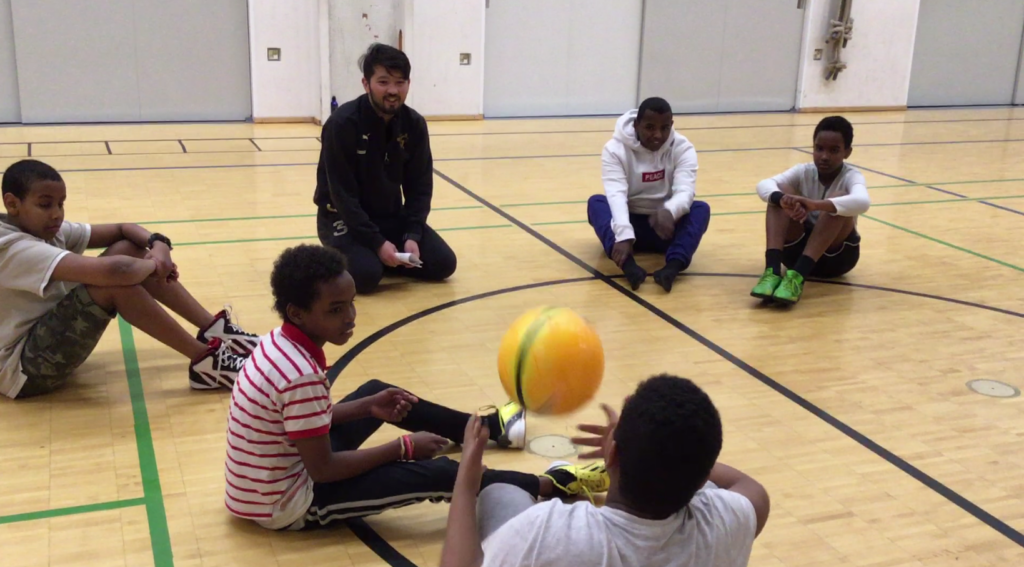
Plan and write down on your lesson plan:
- How are you going to start the lesson?
- E.g. Are you going to blow a whistle and invite the children to a circle?
- How are you going to present the goals to the children?
- How are you going to present life skills to the children?
- What kind of questions are you going to ask to receive input from the children?
- E.g. Are you going to ask about the children’s school day?
For more information about the awareness talk, see the lesson format on the Introduction to the TPSR model page.
4. Plan the physical activity
- Choose appropriate physical activity, exercise, or sport content.
- Write down the physical activity content on your lesson plan! Also, estimate and write down how much time is spend on each activity. It is always better to plan some extra activities.
5. Plan how you embed the teachable pieces of the chosen life skill(s) to the physical activity
Plan and write down on your lesson plan:
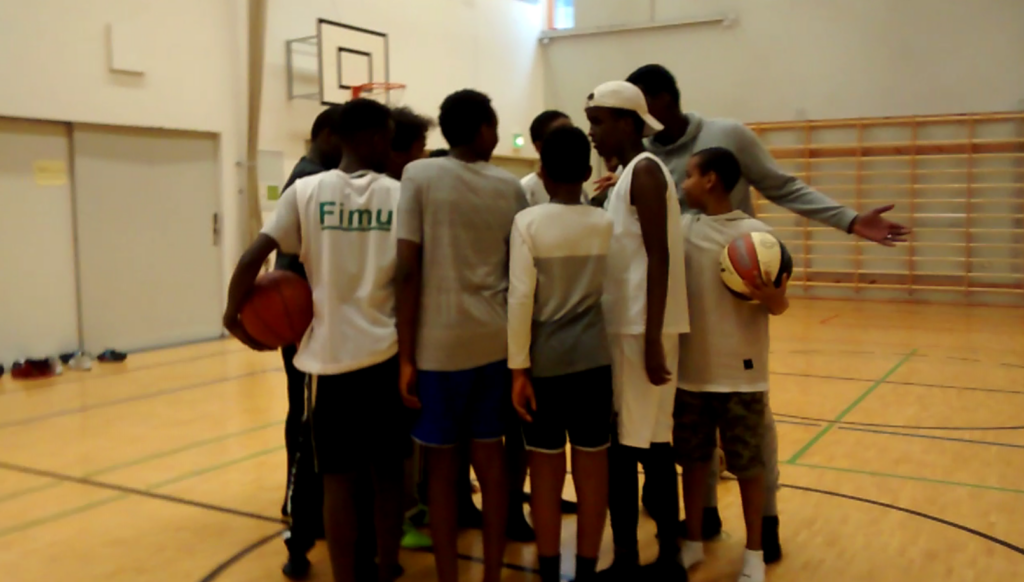
- What kind of questions are you going to ask that are going to encourage the group to reflect on the life skill(s) during the lesson?
- What kind of rules are you going to have in the activities that are going to facilitate the learning of the life skill(s)?
- What kind of specific things are you going to pay attention to during the lesson to observe the use and learning of the life skill?
- Which teaching strategies are you going to use and at what point of the lesson?
For more information about the teachable pieces, see the life skills on the Introduction to the TPSR model page (at the section Life Skills).
6. Plan the group meeting & reflection time
Write down on your lesson plan:
- How are you going to organise the meeting?
- E.g. Are the children invited to a circle?
- How are you going to provide children an opportunity to share their opinion about the lesson and make suggestions?
- How are you going to provide an opportunity for the children to comment on/evaluate the GROUP’s performance and cohesion?
- How are you going to provide an opportunity for the children to give and receive feedback?
- How are you going to provide an opportunity for the children to reflect on their OWN attitudes and behaviours during the lesson?
- How are you going to have the children to share their self-reflections?
- How are you going to discuss about the transfer of the learned skills beyond the physical activity setting?
- How are you going to end the lesson?
For more information about the group meeting and reflection time, see the lesson format on the Introduction to the TPSR model page (at the section Lesson Format) .
Exercise: Plan a physical activity lesson
Create a lesson plan following the previously presented steps and using the provided lesson plan template.